A new little man has come into our world. A change in habitat cannot but affect his well-being. Everything was fine in the maternity hospital, but after a couple of days at home, something was clearly wrong with the baby. The delicate baby skin turns red and then becomes rough, with white scales. The face shows signs of flaking and dry skin.
For what reasons does a baby have peeling skin on the face, head and body? How to help your child in this case and how to prevent the situation from happening again? Let's look into everything in more detail.
Why does a newborn's skin peel on the head, face and body?
There are not many reasons that can cause peeling of the skin on the body of a newborn baby. The first of them is purely physiological. In this case, peeling is just an adaptive reaction of the body. And the second is the body’s obvious response to the pathological process.
It's all about the transition from life in amniotic fluid to an air habitat. Immediately after birth, the baby's skin is covered with vernix. It dries out and remains in the folds on the baby's body and behind the ears. Naturally, the mother diligently removes it from the newborn’s body, and its remains are also wiped off on diapers and baby diapers. All this provokes redness of the baby’s skin, which experts call physiological erythema.
Flushed skin, deprived of the protection provided by the original lubricant, is forced to adapt to the fact that now there is not moisture around, but air. And she does this, however, in a very unique way for parents. Until the sebaceous glands, which seem to lubricate the child’s natural “clothing,” work at full capacity, forming a stable lipid film, the epidermis dries out. The upper layer of the epidermis, the epithelium, dries out, the cells die and flake off. And at the same time you see small white scales on the baby’s skin, which becomes rough.
In this case, there is absolutely nothing to be afraid of, nature is a smart woman, everything is provided for in her and goes on as usual. Once the epidermis learns to interact with air, producing enough sebum to protect itself, the peeling will stop on its own. This usually takes from 5 days to a week.
The second reason why the epithelium exfoliates is pathological, and it is called atopic dermatitis. This is the body's response to the action of allergens. Maybe the mother ate something wrong, or the washing powder is not suitable for the baby. An allergic reaction to the epidermis is manifested by dryness, redness, peeling, and in severe cases, itching and rash. But such a diagnosis can only be made by an experienced pediatrician or neonatologist after conducting appropriate research.
However, most often in newborns under the age of two weeks, the first variant of peeling is registered, that is, the physiological adaptive reaction of the dermis to environmental factors.
A newborn has dry, flaky skin - how to help?
If it's just a matter of physiology, there's little you can do to help. Until the child “sheds” and the original epithelial cells are replaced with ones more resistant to the new environment, no creams, oils or lotions will help. Any cosmetics will simply moisturize the dried and long-dead epithelium, masking the problem from the watchful eye of the parent. But, in fact, the epidermis will continue to peel off, only now it will roll off on clothes and a diaper.
The only thing that would be reasonable on your part is not to dry out the newborn’s skin even more. To do this, it is important to control the microclimate of the room (air humidity should be kept between 50-70%), refuse to use soap and shampoo every day for babies, and do not add magartz, salt, or whatever your worried grandmother will advise you to do. If the skin is peeling, but the child is calm, eats and sleeps well, there is no need to worry. The body will put itself in order, it just needs time.
A newborn has atopic dermatitis - what to do?
It’s another matter when the baby becomes restless against the background of peeling, the appetite worsens, and the newborn’s stool is disrupted during breastfeeding, as well as during artificial or mixed feeding. In this case, the first thing you can do is show the baby to a specialist.
After confirming the diagnosis by exclusion, together with the doctor, you need to determine the cause of the allergic reaction. It could be:
- errors in mother's nutrition during breastfeeding;
- incorrectly selected mixture for “artificial”;
- allergenic substances in baby care products or diaper impregnation;
- unsuitable detergent;
- allergenic cosmetics, soap and/or shampoo from the mother;
- presence of pets in the apartment;
- synthetic clothing or diapers for the baby;
- poor-quality paint on the fabrics from which children's clothing is made.
In general, the reason could be anything. And here the treatment is simple - find and eliminate what provokes such a reaction in the child’s body. While you are looking, it is better to bathe your baby in boiled water with the addition of a decoction of string or chamomile (they disinfect but do not dry the skin), and no more than once a day. In addition, it would also be a good idea to take care of the microclimate and humidity. In severe cases, the doctor will prescribe drug treatment, including all kinds of creams and gels for the skin. But the main thing is to eliminate what the child is allergic to, and atopic dermatitis will slowly disappear.
Prevention
If the body’s goal has been achieved, and it has already “molted,” this does not mean that the epidermis will not begin to peel off again. And here it’s no longer a matter of being a newborn. There are a number of factors that will still provoke periodic drying of the epidermis and peeling:
- dryness in the room;
- frequent bathing;
- frequent use of cleansers and skincare cosmetics;
- weather factors during the walk (moisture + wind or intense sunlight).
It is important to understand that peeling is not fatal and is quite normal, as the dermis is renewed, becoming stronger with each “molting”. But why provoke this trouble if you can avoid it:
- carry out wet cleaning of the room every day, ventilate it;
- install a hydrometer to monitor air humidity;
- buy a special humidifier if the room is always dry;
- if it is not possible to purchase a humidifier, you can place jars of water around the room or hang wet towels, especially during the heating season;
- do not walk in strong wind, rain or hot sun;
- bathe your baby once a day in water without adding potassium permanganate;
- use baby soap and shampoo no more than once every 6-7 days;
- Rinse baby clothes well when washing (most washing machines have an extra rinse function when washing).
In the case of prevention of atopic dermatitis as a cause of peeling of the epidermis in a newborn, all allergenic foods should be excluded from the mother's diet during breastfeeding. It is also worth reconsidering the choice of manufacturer brands for your own and children's care cosmetics, laundry, cleaning and dishwashing products. Ideally, you should clearly find out what the baby is allergic to and exclude this object from the baby’s life until he grows up and outgrows this unpleasant moment.
How to properly care for your newborn's skin
The basic rule for caring for a baby’s epidermis is not to make unnecessary movements. The baby’s body does not need any of your interventions in the process of its adaptation to independent life. Therefore, it is important not to interfere with its work. Over time, the baby’s epidermis will learn to produce a sufficient amount of sebum, creating a reliable lipid barrier over itself. It will protect the baby’s delicate skin from drying out, chapping and excessive sun exposure.
- it must be clean;
- it must be dry;
- Contact with anything that can irritate it (aggressive household chemicals, synthetic fabrics, etc.) must be excluded.
It is enough to bathe the baby once a day; if necessary, it is better to simply wash the baby under the tap or wipe off the dirt with a cotton pad soaked in boiled water. Soap and shampoo should be used about once a week; this will be enough to keep your skin clean, but not enough to dry out your delicate skin. And put potassium permanganate away; in addition to disinfection, it also dries out the epidermis greatly, and a newborn does not need this.
After hygiene procedures, there is no need to rub the newborn with a towel; it is enough to just get wet and leave the newborn naked for a while so that the remaining water dries up on its own. It is advisable to leave the baby naked for some time several times a day - air baths will help the skin quickly adapt to the environment.
The child’s clothes, yours, diapers, sheets, etc. should be made exclusively from natural materials, ideally cotton. This is the best fabric for babies. It allows the epidermis to breathe and does not irritate it. A separate topic is dyes for this fabric, which can ruin even high-quality cotton. Therefore, buy things only in stores where these things have a quality certificate.
Do not forget to take into account that a diaper on a baby creates some discomfort for his dermis. It will always be humid and hot there, so using baby powder is more than justified. The choice of this hygienic device should also be approached responsibly - not all impregnations that manufacturers use are as safe as they are written on the packaging. But only trial and error will help here - if the neighbor’s boy is not allergic to one brand, it is not a fact that it will suit your newborn.
Recommendations for caring mothers and fathers
If you are too worried about peeling and definitely want to put something on your child, please do so. But choose a cosmetic product wisely; it must meet the basic selection criteria:
- the composition should not contain preservatives, dyes or fragrances;
- the bottle must contain all the information about the product, expiration dates must be in order, it must be marked “for children from 0”;
- there must be clear instructions for use that you must read;
- try to choose creams or lotions with a light texture that will not clog pores.
A baby's cosmetic bag with dry skin may include:
- Moisturizing cream. Most often it is used after a walk in order to level out the moment of chapping, or at home when there are signs of peeling of the skin. When using, it is important to strictly follow the instructions, especially the part that says how many times a day you can use the care product.
- Emollients. This is a new word in moisturizing children's skin. Such products not only moisturize the epidermis in the generally accepted sense, they form a lipid surface on it, which prevents the evaporation of moisture and, as a result, drying out of the epidermis.
- Oils. This is “heavy artillery” if creams and emollients fail. Most often they are used under a diaper, where the skin is subject to excessive friction and contact with urine and feces.
- Sunscreens. This is true in the summer when there is too much sun. Yes, it is useful for the baby, but in doses. It makes sense to use such products when you are going to be in the sun for several hours in a row.
Peeling on the skin of a newborn’s body and face is one thing. Peeling of the scalp or the notorious crusts look a little different; they are dark and often frighten vigilant parents. But in fact, it is simply hypersecretion of the glands that colors the scales in a darkish color. It’s important to remember here that you don’t need to scratch them with your nails or a comb, as this can cause an infection on your baby’s skin. It is better to soak them in baby oil and then carefully remove them. If there is a desire, because over time they will disappear by themselves in any case.
Video: why a newborn’s skin peels
In this video, the pediatrician explains why the epidermis begins to peel off in very young children, and whether anything needs to be done about it.
Not only are you in the process of recovering from childbirth, but so is your newborn. A lot has changed in his life recently, and he needs to get used to all these changes. Peeling of the skin is one of the adaptive mechanisms of the baby’s body; thus, the epidermis gets rid of the upper layer of epithelium, replacing it with a new layer of cells more adapted to life in a new environment. Of course, if we are not talking about an allergic reaction in the form of atopic dermatitis. This is already irritation of the dermis, a pathology, the cause of which is important to eliminate, otherwise any treatment will be ineffective.
But most often, the baby’s skin peels off precisely because the process of adaptation to life in the air is underway. And in this case, it is important for you not to interfere with her adaptation to new living conditions, especially if the peeling does not bother the newborn in any way. Otherwise, it is better to consult a doctor.
All iLive content is reviewed by medical experts to ensure it is as accurate and factual as possible.
We have strict sourcing guidelines and only link to reputable sites, academic research institutions and, where possible, proven medical research. Please note that the numbers in parentheses ([1], [2], etc.) are clickable links to such studies.
If you believe that any of our content is inaccurate, out of date, or otherwise questionable, please select it and press Ctrl + Enter.
To compliment a woman and emphasize her blooming appearance they say: “You have skin like a baby!” Elastic, smooth, velvety, pink - this is what children's skin most often looks like. But they are not born like that at all. Wrinkling, cyanosis, dry skin in a newborn is a typical picture that accompanies the birth of a person. Rough and dry skin on the palms, feet, tummy, and chest worries parents; they wonder if this is normal? In the first days of a child's life, the sweat glands are not fully active and are not able to cope with sufficient hydration, which leads to dry skin. Still, such problems are temporary and in a few days everything should return to normal. If this does not happen, you need to figure out what is wrong.
ICD-10 code
Epidemiology
Dry skin, including atopic dermatitis, affects half of the population of our planet, including newborn children. And such a hereditary disease as ichthyosis affects 1 person in several tens of thousands of people.
[1], [2], [3], [4]
Causes of dry skin in a newborn
The skin of newborns is very delicate and sensitive, so it instantly reacts to any unfavorable changes in the external environment and the condition of the internal organs. The causes of dry skin in a newborn may be the following:
- dry air in the room where the child is;
- use of low-quality and age-inappropriate hygiene products: soaps, shampoos, creams;
- excessively wrapping the child;
- the use of clothes and diapers made of synthetic fabrics;
- intestinal pathology;
- hereditary disease ichthyosis;
- atopic dermatitis;
- lack of retinol and vitamin PP - the most important substance involved in the metabolic processes of the body.
[5], [6]
Risk factors
Risk factors for the appearance of dry skin in a newborn include poor nutrition of a pregnant woman, early artificial feeding or supplementary feeding, the presence of chemicals near the child or toys made from chemical materials, metabolic disorders, colds and viral diseases, and hereditary factors.
[7], [8], [9], [10]
Pathogenesis
The human skin is the largest organ in area and it performs numerous functions: respiratory, metabolic, thermoregulation, protection from an aggressive environment. Its outer stratum corneum, the epidermis, contains only 20% of the body's total water. As soon as, for one reason or another, the water evaporates, the lower layers of the skin, which, unlike the epidermis, consist of living cells, begin to give up their own, which leads to disturbances in metabolic processes, the penetration of various infections, and the occurrence of pathological conditions. The baby in the womb was immersed in amniotic fluid for 9 months, which means it was in 100% humidity. With the cutting of the umbilical cord, a radical restructuring of the entire life system occurs. A dry and one-third less humid external environment and an inability to thermoregulate are real stress for the skin of a little person. But gradually adaptation to new living conditions occurs, all processes return to normal.
[11], [12], [13], [14], [15]
Symptoms of dry skin in a newborn
In the first month of a baby's life, dry skin is quite normal. But what are the symptoms of dry skin in a newborn? The first signs are peeling of the skin of the palms, feet, dry skin of the tummy. Parents should try to create the proper microclimate in the room where the little one lives and follow all the rules for caring for him.
It may be a response to a too hot room or excessive wrapping of the child. Despite weak thermoregulation, low humidity and high air temperature will only cause dry skin and flaking in a newborn. During the period of swaddling, it is necessary to take air baths for at least two minutes, bathe in warm water every day, without adding potassium permanganate, because It dries the skin very much, use a humidifier, do not turn on the air conditioner. If everything is fine with this, but the newborn still has dry and flaky skin, you need to check the clothes and diapers in which the baby is wrapped. It is quite possible that they are made of synthetic materials, or that the seams rub against the baby’s delicate body (in children’s clothes the seams are on the front side). It is quite possible that washing detergents are not suitable; they must be special ones that do not contain chemical components. Diapers should be changed every 4 hours and immediately after bowel movements. After removing it, it is recommended to wash or wipe the child with damp cotton pads and allow him to take air baths for a few minutes. It is also necessary to take special cosmetics for moisturizing.
Most often, the reaction is to an incorrect diet for a nursing mother or an unsuitable formula for infants. It is necessary to analyze what could cause such a reaction and exclude the product from the menu. If the newborn has dry skin on his forehead, it is possible that the wrong baby soap or other detergent is being used. These products should not contain allergenic fragrances and they should not be used every day, except for washing the groin area. It is enough to use once a week to wash your hair, twice for your body. The baby's face requires special care: with a cotton pad soaked in boiled water, first wipe the eyes, cheeks, then the nose and lips, ending with the chin. Change the disk and repeat the procedure. Before bathing, the scalp is lubricated with Vaseline or vegetable oil due to the natural formation of flaky crusts in the parietal part. They get wet in water and are easily washed off.
[16]
In the first days of life, a newborn has dry skin on his legs - a consequence of intrauterine lubrication, which exists for better passage of the birth canal. It is absorbed within a few days, helping to go through the adaptation period. Dryness and peeling in the folds of the legs are possible with diaper rash. To avoid them, you must adhere to the rules of hygiene: bathe, wipe all folds with wet wipes, lubricate with baby cream and sprinkle with powder. It is best to buy baby care products in pharmacies to avoid counterfeits.
Complications and consequences
Dry skin is not a harmless symptom, but a problem that can lead to itching, pain, and cracks in the skin. Consequences and complications are not only constant unpleasant sensations for the baby due to which he sleeps poorly and behaves poorly, but also the penetration of pathogenic microorganisms into damaged skin: bacterial, viral and fungal infections. Without taking proper measures, childhood eczema and psoriasis may appear.
[17], [18], [19], [20], [21], [22]
Diagnosis of dry skin in a newborn
The skin of a person, including a baby, is an indicator of his health. Therefore, diagnosing dry skin in a newborn is a necessity, using tests and other research methods, to determine the presence of congenital pathologies, the possibility of exposure to an allergen and its identification. As a rule, a general blood and urine test is performed, a stool test for the Co-program, and, if necessary, skin scrapings for histological examination.
[23], [24], [25], [26], [27], [28], [29], [30], [31], [32]
Differential diagnosis
Differential diagnosis is designed to answer whether a disease, improper care, mother’s nutrition, or feeding the child causes dry skin, if such a symptom does not go away after a month of the baby’s life. Differentiation of pathology occurs between atopic dermatitis, ichthyosis, metabolic disorders, intestinal diseases, etc.
Who to contact?
Treatment of dry skin in a newborn
Treatment for dry skin in a newborn depends on the reasons that caused this phenomenon. First of all, it is necessary to organize proper care for the child. Daily bathing is a must. What should I bathe a newborn in if they have dry skin? The baby should have his own bath, thoroughly washed with soda and a sponge before each bath. Warm water is used - 34-37 0 C and gradually decreases by a degree with each procedure to 30-32 0. A solution of potassium permanganate should not be used, because it will dry out the skin even more. You can use a weak infusion of anti-inflammatory and antiseptic herbs. Children's hygiene products - soap, shampoo should not be used every day, 1-2 times a week is enough. After using them, it is necessary to rinse the child with clean water from the shower or from the jug. An individual towel for drying should be made of natural fabrics, and movements should be blotting. What to apply to dry skin of a newborn? There are special skin care products for infants for this purpose. They should be used to treat dry areas, especially folds.
What to do with dry skin in a newborn if all these measures do not help and new places with peeling of the epidermis appear? You definitely need to contact your pediatrician and find out the reason. The diagnosis of atopic dermatitis requires the use of anti-inflammatory, antihistamines, antibiotics, and antioxidants.
Another unpleasant disease, ichthyosis, is of a genetic nature and consists in disrupting the process of keratinization of the skin. Unfortunately, a method to combat it has not yet been found, because... the reason lies in gene mutations, and methods of influencing these processes have not yet been discovered, then all therapy comes down to constant moisturizing and nourishing the skin.
Antiallergic drugs used in pediatrics for dry skin and flaking include diazolin, tavegil, suprastin.
Suprastin - prescribed to children from one month of age. It is available in tablets and liquid injections. The main active ingredient of the drug is chloropyramine hydrochloride. The dose for small children under one year of age is 5 mg or 0.25 ml, with the expectation that no more than 2 mg per kilogram of the child’s weight can be given per day. Adverse reactions that may follow after taking the drug are increased excitability and prolonged wakefulness of the baby. In this case, the drug is discontinued.
The following sedatives are used for dermatitis: persen, novopassit, motherwort, valerian. Only a pediatrician can determine the advisability of using the drug and its dose.
Motherwort - there are 4 medicinal forms of the herb: tablets, powders, alcohol and water infusions, but the latter is suitable for a newborn. This plant contains essential oils, tannins, organic acids, vitamins A and C. Thanks to this remedy, the functioning of the nervous system and internal organs improves. Motherwort is contraindicated if you are allergic to it.
In case of disturbances in the functioning of the gastrointestinal tract in infants, Plantex for newborns is prescribed.
Plantex is a preparation in granules, consisting of natural ingredients: fennel, essential oil of the same plant, excipients: lactose, dextrose. Used starting from the age of two weeks, immediately after meals or in between feedings. To prepare the solution, add 100 ml of warm boiled water to one bag of granules and stir thoroughly until the granules are completely dissolved. Make a fresh solution at each appointment, do not prepare it for future use. Can be given from a bottle or spoon. If difficulties arise with this, it can be taken by a nursing mother; the product will reach the baby with her milk. Contraindications to the drug are intolerance to the components and deficiency of the lactose enzyme. Side effects include allergies.
Skin care products are indispensable for dry skin. Some of them are panthenol, bepanten, dermopanten.
Panthenol - there are various forms of this drug: cream, ointment, milk, aerosols with aloe vera, vitamin complex, menthol, etc. This drug is non-toxic, does not have carcinogenic properties, therefore it is indicated for use from birth. After bathing or washing, the product is applied to flaky areas, especially carefully lubricating the folds. Contraindicated in case of hypersensitivity to the components, because Allergy manifestations are possible.
Since one of the reasons for dry skin in newborns is a lack of vitamin A and PP, these vitamins are prescribed to eliminate it. Vitamin E and fish oil can also solve the problem. It is necessary to control the content of vitamin D in the body; its excess reduces the calcium content in the body, which can cause allergies. External baby body care products, including vitamins, will also improve the condition of the skin, unless there is a more complex problem behind it.
Physiotherapeutic treatment is effective in the treatment of serious diseases such as atopic dermatitis and ichthyosis. It includes various methods of influencing the epidermis: ultra rays, oxygen, ozone, ultrasound, magnet, electric current, etc. In addition to the positive effects of such procedures on the affected areas, there are also contraindications that the doctor must take into account when prescribing.
Traditional treatment for dry skin suggests the use of baths with anti-inflammatory, antiseptic herbs, lotions, powders prepared according to folk recipes. Here are a few of them:
- grate a large potato on a fine grater, squeeze a little, wrap this mass in gauze and apply to the affected area, hold for a while;
- mix honey and Kalanchoe juice in equal parts, leave for a week in the refrigerator, lubricate the areas of peeling;
- treat inflamed areas with a solution of vinegar and water in a ratio of 1:10;
- Combine geranium oil with refined sunflower oil and lubricate dry areas.
[33], [34]
Herbal treatment of dry skin in newborns involves first of all preparing infusions for bathing. For this, chamomile, celandine, calendula, thyme, lemon balm, mint, sage, and lavender are useful. The series, although known for its antiseptic properties, dries the skin, so its use should be treated with caution, observing the reaction. Lycopodium pollen has a good healing effect; it is used as powder.
Homeopathy in pediatrics is used quite often, but the doctor must decide whether it will harm such a small child.
The following are used as sedatives: “Kaprizulya”, “Notta”, “Hare”, “Edas”, “Baby-Sed”, “Valerianahel”, “Nervohel”, “Scamp”.
“Hare” is a fruit syrup that contains barberry fruits, caraway seeds, mint, lemon balm, motherwort, hawthorn, chamomile, valerian root, vitamins A and B6. The dose is determined by a homeopath, but the general regimen is that the drug is dissolved in water (on average a teaspoon) and given to the baby during feeding. Contraindicated in case of hypersensitivity to any of the constituent components. Allergies are possible as a side effect.
For redness of the epidermis and red spots, aconite, pulsatilla, and lycopodium are used. Alumina 6, 12 (dilutions) are prescribed for skin peeling, cracking, itching; sulfur 6 – for allergic rashes; if the cause of dry skin and peeling is a disorder of the digestive tract, iris 3, 6 is used; dry crusts with dermatitis are treated with arsenicum, calcarea carbonica; peeling with scales - arsenicum, acedum, calcarea.
Here are a few more homeopathic medicines that can be purchased in pharmacies and used to treat children:
- Spenglersan colloid K is a skin spray, a clear liquid with a specific odor. For infants up to one year old, one spray three times a day is recommended. No contraindications or side effects were found;
- Traumeel S – ointment, has anti-inflammatory, anti-exudative effect. Can be used by children from birth. Apply a thin layer to the inflamed area 2-3 times a day for 2 weeks. Additional rashes are possible in case of hypersensitivity to the components of the drug;
- Notta is a sedative drug, produced in drops for small children. Stabilizes the autonomic nervous system. The dose is 1 drop per tablespoon of water or milk, used three times a day between feedings. Side effects are possible in the form of allergic manifestations;
- iricar - cream, used for itching of the skin of various origins, eczema. Before use, children under one year of age should consult a doctor. Apply to problem areas of the skin with a light ball three times a day. There are known cases of hypersensitivity reactions to the use of the drug.
Surgical treatment for dry skin is resorted to if the skin becomes infected with severe signs of intoxication: high fever, the appearance of deep abscesses or carbuncles. Other conditions do not require surgery.
Prevention
Preventive measures to avoid dry skin include: maintaining a favorable microclimate in the room where the newborn is located. To do this, the room temperature should not be higher than 20 ° C, and the humidity should not be less than 50%. It is also necessary to ventilate it periodically. Daily bathing in warm, comfortable water with the addition of medicinal herbs, using certified children's cosmetics, natural clothes, feeding with mother's milk and following a diet will make it possible to avoid skin problems.
[35], [36]
Forecast
The prognosis for dry skin in newborns, not complicated by genetic diseases, is favorable provided that the rules of skin care are followed. Atopic dermatitis is also cured after long-term complex treatment. But ichthyosis cannot be completely cured, and therapy is aimed only at maintaining the condition, which over time is still complicated by systemic pathologies. Detection of a child’s disease in the womb gives every reason for the doctor to suggest termination of pregnancy.
[37]
The delicate skin of a baby is very thin, easily injured, and due to some of its features it dries quickly. Dry skin not only causes discomfort, but causes serious dermatological problems. If treatment is not started in time, wounds and ulcers, eczema may appear, and if a fungal infection occurs, thrush may develop. It is important to find the cause of dryness and eliminate it. Without this, even the most correct treatment and care will not help. If you cannot find out the cause on your own, it is better to consult a pediatrician or pediatric dermatologist.
Content:
- Causes of dry skin
- Environmental response
- Reaction to care products
- Lack of care
- Dehydration
- Diseases that cause dry skin

Causes of dry skin
In most cases, the cause of dryness is the physiology of newborns. In the womb, the baby is covered with smegma, or vernix, which performs a protective function. After the baby is born, it is gradually washed away, and the baby’s skin cannot yet sufficiently perform the functions assigned to it. In addition, her immunity is poorly developed, and any impact, external or internal, immediately affects the condition of the skin.
The sebaceous and sweat glands of a newborn are also not yet developed; thermoregulation is established only by the end of the first year of life. Any overheating is fraught with profuse sweating, which protects against overheating.
All these features lead to the fact that the baby’s skin reacts to any adversity with a rash, redness, and begins to dry and peel.
Other reasons why a child develops dry skin are related to the conditions surrounding him, the general condition of the body, and the characteristics of care.
These may be unfavorable weather conditions: wind, frost, exposure to the open sun for a long time. When going outside, it is advisable to take care of protecting exposed skin. So, in the summer, apply sunscreen, in the winter, lubricate your face with a cream that protects from low temperatures.
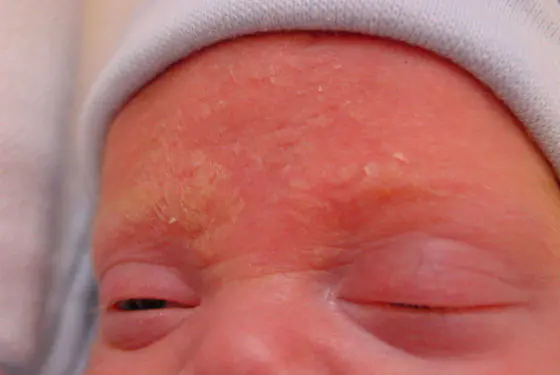
Things to remember: During the cold season, protective agents should be applied in advance, at least half an hour before going outside.
This also includes too dry air in the nursery, which is the most common problem in winter, during the heating season. The optimal humidity is 55-70%, which is achieved with special electric humidifiers or wet towels hung on heating radiators. You can also place a small container of water near the crib, periodically spray water from a spray bottle, and ventilate the room more often.
We are talking not only about soap, shampoo, foam, but also about various additives that parents use when bathing their baby. Not so long ago, doctors advised adding a weak solution of manganese to water. This is what causes dry skin.
Modern pediatricians advise bathing a child, if he does not have serious skin problems, in ordinary tap water after the umbilical wound has completely healed. If mom is worried about its quality, then you can use boiled or filtered water. Hygienic products are used no more than once a week or when heavily soiled.
You should also pay attention to what powder is used when washing children's clothes. Special baby powders and mouthwashes are not a clever marketing ploy. Most of them undergo strict control and do not contain fragrances or other components that can cause allergies in the form of peeling, irritation and redness of the skin. Therefore, in the first year of a child’s life, it is advisable to wash his clothes and bedding separately, using products from the children’s line.

The skin of a newborn needs constant care. Hygienic procedures in the form of rubbing and washing must be carried out in the morning; it is advisable to bathe the baby every evening before the last feeding. Wash the baby every time you change the diaper and after bowel movements. Here it is enough to use warm running water.
At the same time, feces contain enzymes that, if left untreated, can cause severe irritation, which often results in diaper dermatitis and other serious skin diseases.
Organizing the drinking regime correctly is important from the first stages of a baby’s life. If a newborn is breastfed, mother's milk is usually enough to fill you up and quench your thirst. It is still worth offering your child clean water, especially in hot weather or in stuffy rooms, but if he refuses, do not insist.
Children who are bottle-fed or mixed-fed must be given water. How to establish a drinking regime, how much liquid a child should drink - it is better to clarify these questions with your pediatrician.
Dehydration also appears with high fever, increased sweating, vomiting and diarrhea. Doctors advise not to self-medicate. In all these conditions, the child loses fluid, so dehydration, which is especially dangerous for children in the first year of life, develops quickly.

Important: It is easy to detect dehydration in a newborn. The tongue and lips become dry, the skin becomes tense and appears transparent, and the fontanel sinks. In this condition, you should consult your doctor. If symptoms are noticed in the evening, you should not wait until the morning; it is better to immediately call an ambulance.
In addition to reasons related to errors in care, dry skin can be due to the presence of certain diseases:
- improper functioning and intestinal pathologies;
- atopic or diaper dermatitis at the initial stage;
- avitaminosis;
- Ichthyosis is a disorder of the process of keratinization of the skin.
If any of the conditions are detected, you should consult a doctor. Starting treatment without consulting a pediatrician is dangerous: a newborn’s body can react negatively even to the most seemingly harmless drugs.
Treatment
If dry skin is not associated with diseases, and the cause of this condition has been identified and eliminated, then it is quite possible to carry out treatment at home. The main thing here is to choose the right care product.
According to many mothers, the best in the fight against almost any dermatological problems are creams and ointments with dexpanthenol: panthenol, bepanthen. Dexpanthenol ointment contains preservatives and cheaper fatty components. In the composition, for example, “Bepanten” contains almond oil as one of them, and “Bepanten Plus” contains the antiseptic chlorhexidine.
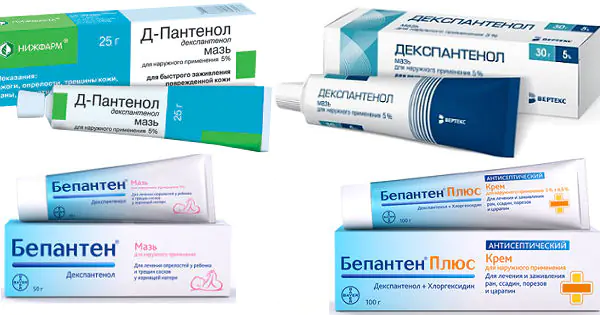
All of them perfectly soften, moisturize and heal the skin, and cope even with advanced forms of dermatitis. They are practically identical in composition and action, but differ significantly in cost. The cheapest of them is “Dexpanthenol” (up to 100 rubles per tube), “Bepanten” is the most expensive (from 400 rubles).
Now on the shelves of stores and pharmacies you can find many baby creams that contain dexpanthenol, additional vitamin E, and herbal extracts.
Things to remember: It is better to buy medications and care products in pharmacies to avoid purchasing low-quality products or counterfeits.
Bepantol Baby from Bayer – a new protective cream for diapers, but can also be used to lubricate dry areas of skin. The composition contains provitamin B5, vitamin B3, shea butter, jojoba, olive, niacinamide, vitamin E, phospholipids, lanolin. It has excellent wound healing properties and protects against dryness. The hypoallergenic composition without fragrances and dyes makes it possible to use it in children from birth. The average cost is 800-900 rubles.
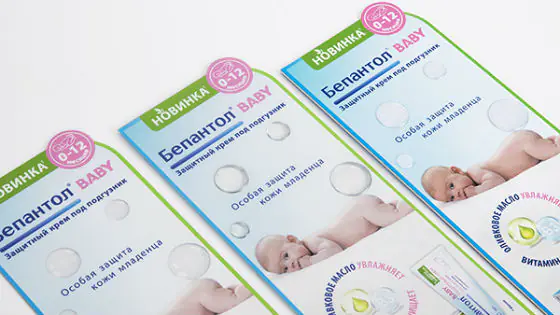
Sudocrem contains zinc oxide, paraffin and lanolin, it softens, soothes and restores the skin. It has a slight anesthetic effect, relieves discomfort and pain. The average cost of the cream is 500 rubles.
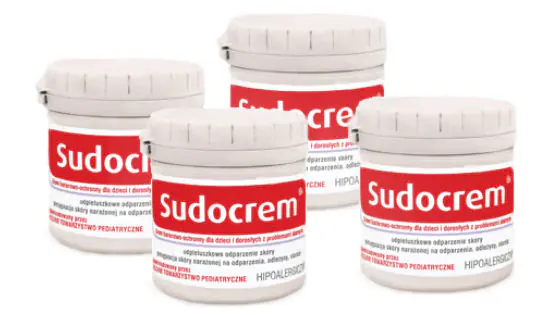
Line of Bubchen creams. The main components are zinc oxide and panthenol. Heal and soothe the skin, relieve itching, flaking, and redness. The price for one tube is about 300 rubles.
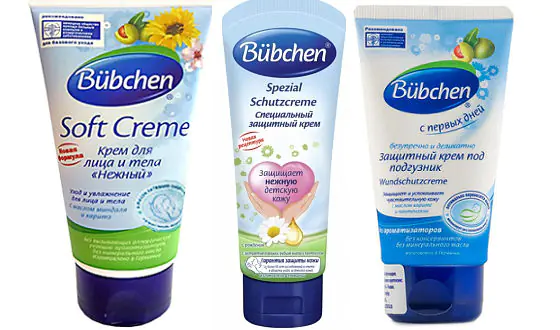
Little Siberica produced in Russia includes extracts of medicinal herbs (yarrow, marshmallow, Rhodiola rosea and others), beeswax, oils (sunflower, shea, pine nut), vitamin E, glycerin. Eliminates diaper rash and irritation, softens, moisturizes and nourishes the skin, has antiseptic properties. It has a “COSMOS-Standard organic” certificate - an absolutely harmless product. Cost from 250 rubles.
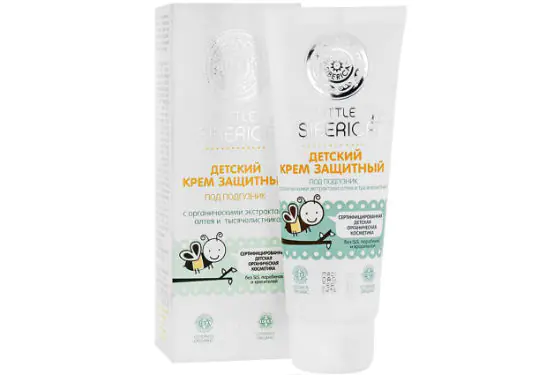
"Umka" - soothing and moisturizing cream from Russian manufacturers. Contains ectoine, panthenol, olive oil, chamomile extract. Has good healing and restorative properties. Price – 90 rubles.
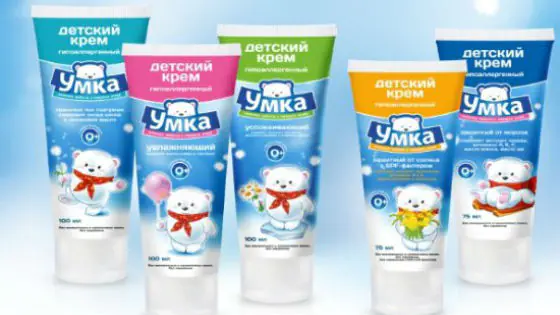
Many mothers notice improvements after using baby or any cosmetic oil. You should choose non-comedogenic, easily absorbed oils, for example, peach, apricot, almond. Cosmetic oils do not need to be heated over a fire; just moisten a cotton pad and apply the product to a dry area of skin.
The disadvantage is that the oils take a long time to absorb and leave greasy marks on the laundry. Before dressing the baby, it is advisable to blot the body with a soft napkin so that a greasy film does not remain on the surface and the skin can breathe freely.
When adding herbal decoctions to baths and using them when washing and drying the baby, you should remember that many of them have a pronounced drying effect, which, if dry, will only aggravate the situation. This is everyone's favorite chamomile, string, calendula, oak bark.
Oat decoction has very good softening and restorative properties. To prepare it, 1-2 tbsp. l. pour a glass of boiling water over the unrefined grain, cook over low heat for 10-15 minutes and let it brew for half a day. The finished broth is filtered and added to the bath before bathing. You can make lotions by moistening gauze folded in several layers and applying it to dry areas of the skin.
Potato lotions
Grate a small potato on a fine grater, collect the pulp in gauze, wrap it and apply to the affected area for a few minutes. Potatoes relieve inflammation, soothe and moisturize the skin.
Ointment made from honey and Kalanchoe juice
Mix natural bee honey and squeezed Kalanchoe juice in equal parts, leave in the refrigerator for 7 days. Apply a thin layer to dry skin.
How to avoid dry skin
Prevention plays an important role, because it is much easier to prevent such manifestations than to treat subsequent infections later:
- The baby's skin should be moisturized with selected creams or ointments. Many parents massage their newborn using oil or a special baby product. There are enough of them; additional processing is often not required.
- The humidity in the nursery should not be below 55%. It is advisable to carry out wet cleaning every day, since dust is also a common cause of allergies, causing dryness and tightness of the skin.
- Everything that the child’s skin comes into contact with must be made from natural fabrics, since even a small percentage of synthetics can provoke unwanted skin reactions.
- Monitor the baby’s condition, promptly treat diseases, and prevent dehydration and other complications.
A nursing mother should adjust her diet; if dry skin appears in a bottle-fed baby, a different formula is selected together with the pediatrician.



